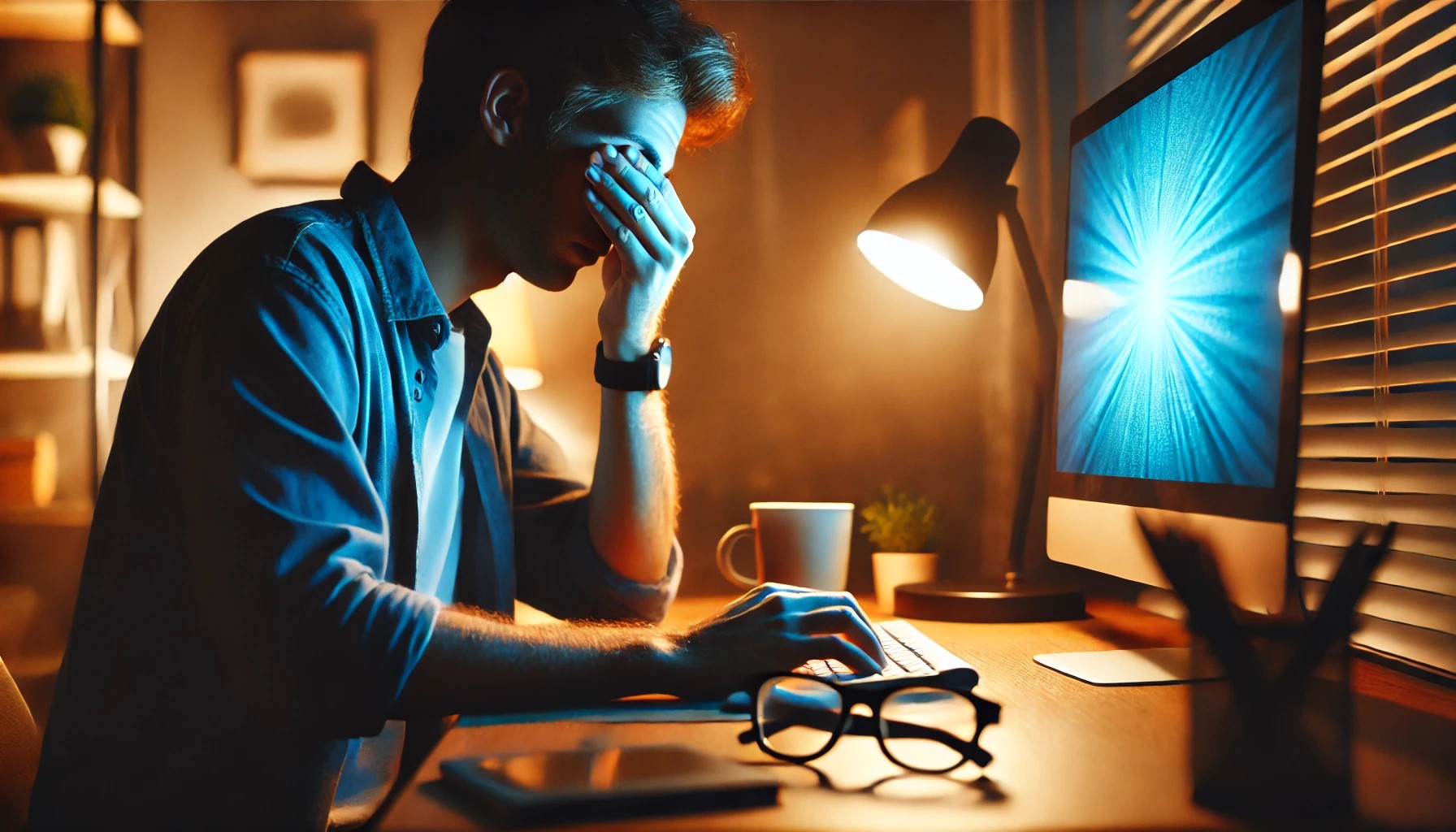Staring at screens for hours can lead to discomfort, fatigue, and long-term issues if not managed properly. Eye strain, dryness, and headaches are common complaints among those who spend extended periods on digital devices. Fortunately, small adjustments in habits and environment can make a significant difference.
1. Follow the 20-20-20 Rule
Extended screen use causes the eyes to focus intensely at a fixed distance, leading to fatigue. The 20-20-20 rule is a simple yet effective way to relieve strain:
- Every 20 minutes, look at something 20 feet away for at least 20 seconds.
- This brief pause allows the eye muscles to relax and prevents excessive strain.
- Using a timer or reminder app can help maintain consistency.
2. Adjust Screen Brightness and Contrast
Screens that are too bright or too dim force the eyes to work harder. To reduce strain:
- Match screen brightness to surrounding light levels.
- Increase contrast for better readability, reducing unnecessary eye effort.
- Enable dark mode or blue-light filters when working in low-light conditions.
3. Blink More to Prevent Dryness
Blinking naturally keeps the eyes lubricated, but screen use often reduces blink frequency.
- Make a conscious effort to blink more often.
- Use artificial tears if dryness becomes an issue.
- Take short breaks to close your eyes and allow them to rest.
4. Adjust Screen Position and Angle
Poor screen placement can contribute to discomfort. Optimizing positioning can improve comfort and reduce strain.
- Keep screens 20-26 inches away from your eyes.
- Position the top of the screen at or just below eye level to maintain a natural gaze.
- Tilt screens slightly backward (about 10-15 degrees) to reduce glare and reflections.
5. Reduce Glare and Improve Lighting
Glare from windows, overhead lights, or reflections on screens can lead to eye fatigue.
- Use anti-glare screen protectors to minimize reflections.
- Adjust room lighting to avoid excessive brightness or shadows.
- Position screens to prevent direct light from shining on them.
6. Use Blue Light Filters
Prolonged exposure to blue light from screens can disrupt sleep cycles and contribute to strain.
- Enable night mode or blue light filters on devices.
- Consider blue light-blocking glasses for extended screen use.
- Reduce screen time before bed to promote better sleep.
7. Optimize Text Size and Display Settings
Straining to read small text can increase discomfort. Adjusting display settings can improve clarity.
- Increase font size for better readability.
- Adjust resolution to ensure sharp and clear text.
- Use high-contrast settings for improved visibility.
8. Maintain Proper Posture
Poor posture can contribute to neck and shoulder strain, worsening eye fatigue.
- Sit with a straight back and keep feet flat on the floor.
- Adjust chair height so eyes align naturally with the screen.
- Avoid slouching or leaning too close to the display.
9. Take Regular Breaks
Extended screen use without breaks can lead to prolonged discomfort.
- Stand up and stretch every 30-60 minutes.
- Step away from the screen and focus on distant objects to reset vision.
- Engage in non-screen activities to give the eyes a break.
10. Get Regular Eye Exams
Routine eye checkups help detect and address vision issues early.
- Visit an eye doctor annually for a comprehensive exam.
- Discuss any screen-related discomfort with an optometrist.
- Update prescriptions as needed to ensure proper vision support.
Making small but consistent changes can significantly reduce strain and improve long-term eye health. Simple habits like taking breaks, adjusting lighting, and blinking more often can keep eyes comfortable even during extended screen use.
